
Rømø: A Danish Island Paradise
Discover Rømø: Denmark's serene island with expansive beaches, rich Viking history, and thrilling windsurfing adventures in the heart of the Wadden Sea National Park.
Rømø, a serene island in the Wadden Sea, is a gem waiting to be discovered. This Danish island is renowned for its expansive sandy beaches that stretch as far as the eye can see, making it a haven for sunbathers, kite flyers, and sandcastle builders alike. The natural beauty of Rømø is complemented by its quaint villages, charming thatched cottages, and rich Viking history, offering a unique blend of relaxation and exploration. The island's beaches are not just for lounging; they are a playground for adventure seekers. Windsurfing, kite surfing, and beach sailing are popular activities, attracting enthusiasts from all over Europe. For those who prefer a more tranquil experience, birdwatching and nature walks in the Rømø Kirkeby Plantage provide a peaceful escape. The island is also part of the Wadden Sea National Park, a UNESCO World Heritage site, offering guided tours that showcase its diverse wildlife and stunning landscapes. Rømø's cultural heritage is evident in its local museums and historical landmarks. The Kommandørgården National Museum offers a glimpse into the island's maritime past and the lives of the wealthy sea captains who once called Rømø home. Visitors can also explore the medieval Rømø Church, with its unique ship models hanging from the ceiling, symbolizing the island's deep connection to the sea. Whether you're looking to unwind on the beach, immerse yourself in nature, or delve into history, Rømø offers something for every traveler.
Local tips in Rømø
- Visit in late summer to experience the unique phenomenon of the 'Black Sun,' where thousands of starlings create mesmerizing patterns in the sky.
- Rent a bike to explore the island at your own pace; Rømø has excellent cycling paths that take you through scenic landscapes.
- Try the local seafood at one of the island's charming eateries for a taste of fresh, authentic Danish cuisine.
- Check the tidal schedules if you plan to explore the Wadden Sea flats; guided tours are highly recommended for safety and educational insights.
- Bring windproof clothing as the island's open beaches can be breezy, even during the summer months.
Rømø: A Danish Island Paradise
Rømø, a serene island in the Wadden Sea, is a gem waiting to be discovered. This Danish island is renowned for its expansive sandy beaches that stretch as far as the eye can see, making it a haven for sunbathers, kite flyers, and sandcastle builders alike. The natural beauty of Rømø is complemented by its quaint villages, charming thatched cottages, and rich Viking history, offering a unique blend of relaxation and exploration. The island's beaches are not just for lounging; they are a playground for adventure seekers. Windsurfing, kite surfing, and beach sailing are popular activities, attracting enthusiasts from all over Europe. For those who prefer a more tranquil experience, birdwatching and nature walks in the Rømø Kirkeby Plantage provide a peaceful escape. The island is also part of the Wadden Sea National Park, a UNESCO World Heritage site, offering guided tours that showcase its diverse wildlife and stunning landscapes. Rømø's cultural heritage is evident in its local museums and historical landmarks. The Kommandørgården National Museum offers a glimpse into the island's maritime past and the lives of the wealthy sea captains who once called Rømø home. Visitors can also explore the medieval Rømø Church, with its unique ship models hanging from the ceiling, symbolizing the island's deep connection to the sea. Whether you're looking to unwind on the beach, immerse yourself in nature, or delve into history, Rømø offers something for every traveler.
When is the best time to go to Rømø?
Iconic landmarks you can’t miss
Wadden Sea National Park
Immerse yourself in the extraordinary tidal landscape of Wadden Sea National Park, Denmark’s UNESCO-listed coastal sanctuary teeming with migratory wildlife.

Vidåslusen
Discover Vidåslusen in Højer, Denmark: A historic sluice offering stunning Wadden Sea views, local cuisine, and a gateway to the Tøndermarsken marshlands.

Lakolk strand
Experience the Majestic Lakolk Strand: Drive on the expansive sands, enjoy thrilling water sports, and witness the spectacular annual Kite Festival on Rømø Island.

Marsk Tower - Marsk tårnet
Marsk Tower is a modern architectural icon on Denmark’s Wadden Sea coast, spiraling above marshes for spectacular views of Rømø, the North Sea, and rich birdlife.

Rømø Church
Explore Rømø Church, a serene 13th-century Lutheran landmark that embodies the island’s rich maritime traditions and community spirit, set against sweeping coastal landscapes.
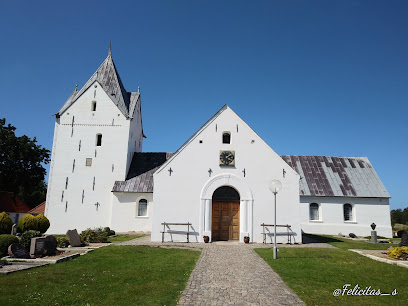
Nationalmuseets Kommandørgård
Step inside Rømø’s Kommandørgård museum: a preserved 18th-century farmhouse showcasing the island’s whaling heritage, maritime artifacts, and rural tradition.
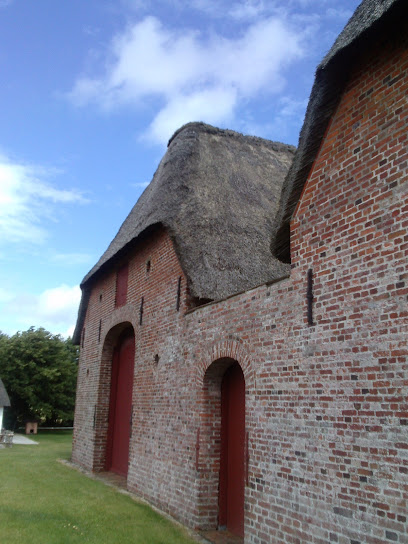
Naturcenter Tønnisgård
Discover the heart of Rømø’s nature, wildlife, and island heritage at Naturcenter Tønnisgård, nestled in a historic farmhouse beside the wild Wadden Sea.

Famous Rømø Beach
Explore the breathtaking expanse of Famous Rømø Beach—Denmark’s largest sandy beach and a haven for outdoor fun, scenic drives, and tidal wonders.
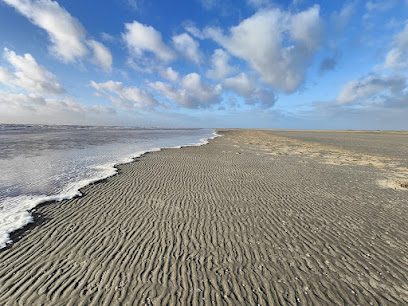
Bunker und Bunkertour Römö
Explore Rømø's WWII bunkers in Tvismark Plantation for a unique historical adventure.

Spidsbjerg Rømø
Experience the elemental beauty of Spidsbjerg—Rømø’s iconic dune headland—where wind, waves, and endless sand create a uniquely wild coastal escape.
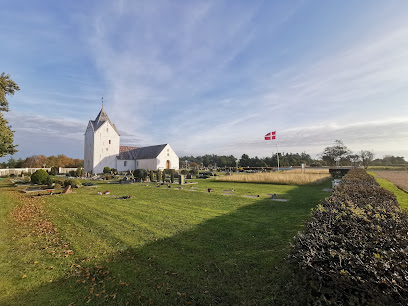
Rømø Lege- & Labyrintpark
Discover a world of family fun at Rømø Lege- & Labyrintpark: mazes, games, and outdoor adventures await on the beautiful island of Rømø, creating unforgettable memories for all ages.

Rømø Sønderstrand
Expansive sandy horizons, wind-powered thrills, and unforgettable sunsets await on Rømø’s famed Sønderstrand—a North Sea playground for adventurers and dreamers.

Rømødæmningen
Rømødæmningen is the scenic causeway bringing visitors to Rømø, offering striking views of the Wadden Sea, unique birdlife, and an unparalleled sense of arrival.

Tøndermarsken
Experience Denmark’s largest marshland in Tøndermarsken—world-class birdwatching, rich dike culture, and tranquil trails near the Wadden Sea UNESCO site.

Sønderstrand Rømø
Experience the boundless freedom of Sønderstrand, Rømø: Europe's widest beach, where wind sports, nature, and unique coastal landscapes converge for an unforgettable escape.

Unmissable attractions to see
Wadden Sea National Park
Hundeskoven Vråby is Rømø’s beloved dog park, nestled in peaceful pine woodland—perfect for off-leash adventures, dog-friendly walks, and meeting local pet owners year-round.

Lakolk strand
Experience the vibrant beauty of Læsø's Rhododendronstien, a trail adorned with over a thousand blooming rhododendrons amidst rich cultural landmarks.
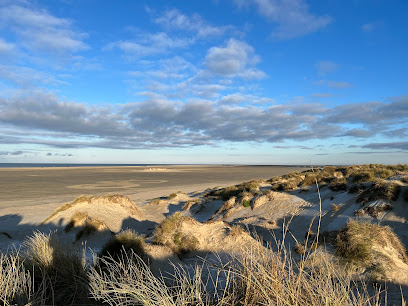
Marsk Camp A/S
Experience the best of Danish design, panoramic marsh views, and dark-sky nights at Marsk Camp—a contemporary retreat on the edge of the UNESCO Wadden Sea near Rømø.
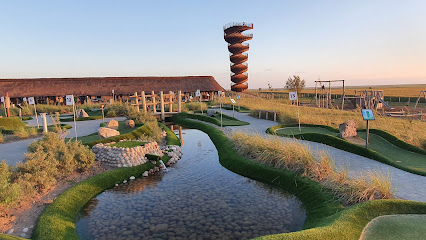
Schackenborg Castle
Explore Schackenborg Castle: A Baroque masterpiece in Møgeltønder, rich in Danish royal history and architectural splendor.

Rømø Church
Vast heather-covered dunes, wild berry foraging, and secluded coastal views await in Spidsbjerg—Rømø’s untouched slice of windswept North Sea wilderness.

Riberhus Slotsbanke
Baroque castle estate with royal heritage, peaceful gardens, and interiors reflecting centuries of Danish noble and royal life in the heart of southern Jutland.

Spidsbjerg Rømø
Explore Spidsbjerg on Rømø—a wild dune landscape of windswept heather, rare berries, migratory birds, and sweeping North Sea vistas, steeped in rugged Danish nature.
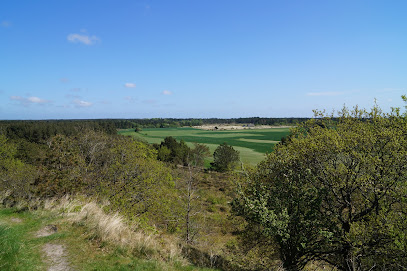
Rømø Dragefestival
Discover sweeping dune views, heather-clad heath, and wild berry landscapes at Spidsbjerg, a tranquil natural vantage on Rømø’s untamed western edge.

Ballum Sluse
Experience Rømø's authentic community spirit beneath the open sky at Bålpladsen, a coastal bonfire site blending Danish tradition with the North Sea’s island landscape.

Sølsted Mose
Discover centuries of Danish royal intrigue, elegant interiors, and manicured gardens at Schackenborg Castle—an essential cultural sight near Tønder, southern Jutland.

Reiterhof Thomsen auf Rømø
A windswept haven of dunes, heather, and wild berries at the northern tip of Rømø, perfect for tranquil hikes, berry picking, and unfiltered coastal vistas.

Rømø shooting area
Wild dunes and heathland scenery meet the North Sea at Spidsbjerg Rømø, an unspoiled escape for hikers, birdwatchers, berry-pickers, and seekers of solitude.

Albue Fuglekøje
Discover the serene grandeur of Schackenborg Castle—where Danish nobility, elegant baroque architecture, and lush gardens make for a memorable southern Jutland highlight.

Stormflodssøjlen
Baroque beauty and royal history meet at Schackenborg Castle, an iconic moated estate with lush gardens, guided tours, and deep Danish heritage near Tønder.

Stormengene, fuglereservat
Spidsbjerg Rømø offers sweeping ocean views, wild heather dunes, and tranquil walking trails at the untouched tip of the island within Wadden Sea National Park.

Local Phrases about Rømø
-
- HelloHej
[hey] - GoodbyeFarvel
[far-vel] - YesJa
[ya] - NoNej
[nay] - Please/You're welcomeVær så god
[ver so go] - Thank youTak
[tak] - Excuse me/SorryUndskyld
[oon-skyl] - How are you?Hvordan har du det?
[vor-dan har doo deh] - Fine. And you?Fint. Og du?
[fint. oh doo] - Do you speak English?Taler du engelsk?
[ta-ler doo en-gelsk] - I don't understandJeg forstår ikke
[yay for-stor ee-keh]
- HelloHej
-
- I'd like to see the menu, pleaseJeg vil gerne se menuen, tak
[yay vil geer-neh seh meh-noo-en, tak] - I don't eat meatJeg spiser ikke kød
[yay spee-ser ee-keh kew-d] - Cheers!Skål!
[skawl] - I would like to pay, pleaseJeg vil gerne betale, tak
[yay vil geer-neh beh-tah-leh, tak]
- I'd like to see the menu, pleaseJeg vil gerne se menuen, tak
-
- Help!Hjælp!
[yelp] - Go away!Gå væk!
[go vehk] - Call the Police!Ring til politiet!
[ring teel po-lee-tee-eh] - Call a doctor!Ring efter en læge!
[ring ef-ter en lay-eh] - I'm lostJeg er faret vild
[yay er fah-ret veeld] - I'm illJeg er syg
[yay er soog]
- Help!Hjælp!
-
- I'd like to buy...Jeg vil gerne købe...
[yay vil geer-neh kew-buh] - I'm just lookingJeg kigger bare
[yay kee-ger bah-reh] - How much is it?Hvor meget koster det?
[vor meh-yet koh-stehr deh] - That's too expensiveDet er for dyrt
[deh er for doo-ert] - Can you lower the price?Kan du sænke prisen?
[kan doo sahn-keh pree-sen]
- I'd like to buy...Jeg vil gerne købe...
-
- What time is it?Hvad er klokken?
[vah deh kloh-ken] - It's one o'clockKlokken er et
[kloh-ken er et] - Half past (10)Halv ti
[halv tee] - MorningMorgen
[moh-ren] - AfternoonEftermiddag
[ef-ter-mee-dah] - EveningAften
[af-ten] - YesterdayI går
[ee gor] - TodayI dag
[ee dah] - TomorrowI morgen
[ee moh-ren] - 1En
[en] - 2To
[toh] - 3Tre
[treh] - 4Fire
[fee-reh] - 5Fem
[fem] - 6Seks
[seks] - 7Syv
[soov] - 8Otte
[o-teh] - 9Ni
[nee] - 10Ti
[tee]
- What time is it?Hvad er klokken?
-
- Where's a/the...?Hvor er en/et...?
[vor er en/et] - What's the address?Hvad er adressen?
[vah deh ah-dres-en] - Can you show me (on the map)?Kan du vise mig (på kortet)?
[kan doo vee-seh mee (pow kohr-teh)] - When's the next (bus)?Hvornår er næste (bus)?
[vor-nar er neh-steh (boos)] - A ticket (to ....)En billet (til ...)
[en bee-let (teel)]
- Where's a/the...?Hvor er en/et...?
History of Rømø
-
Rømø, like much of Denmark, has roots that trace back to the Viking Age. Archaeological discoveries on the island have unearthed evidence of Viking settlements and burial sites, revealing the island's importance as a strategic location in the North Sea. The Viking legacy is still palpable today through various historical sites and local folklore.
-
In the medieval period, Rømø became known for its fishing and trading activities. The island's inhabitants primarily depended on the sea for their livelihood, fishing for herring and trading with neighboring regions. This era laid the foundation for the island's later economic developments and established its maritime culture.
-
During the 17th and 18th centuries, Rømø experienced a significant economic boom with the rise of the whaling industry. The island became a major center for whaling, attracting skilled sailors and craftsmen. The wealth generated from whaling led to the construction of grand homes known as 'Kommandørgårde,' which can still be visited today as museums showcasing the island's prosperous past.
-
Rømø's strategic location made it a point of interest during World War II. The island was occupied by German forces, who constructed bunkers and other military installations. Today, these remnants of wartime history can be explored, offering a glimpse into the island's role in the broader conflict.
-
The 20th century marked a new chapter for Rømø as it transitioned from a primarily maritime economy to a popular tourist destination. The island's natural beauty, including its expansive beaches and unique wildlife, attracted visitors from around the world. Infrastructure developments, such as the construction of the Rømø Dam in 1948, facilitated easier access to the island, further boosting its appeal as a holiday spot.
-
Rømø is rich in cultural traditions that reflect its diverse history. Annual events like the Rømø Kite Festival and the traditional Rømø Church Fair celebrate the island's heritage and community spirit. These festivals offer visitors an opportunity to experience the local culture, arts, and crafts, making Rømø a vibrant and culturally engaging destination.
Rømø Essentials
-
Rømø is an island in the Wadden Sea in Denmark. The nearest major city is Esbjerg, which has a regional airport. From Esbjerg, you can drive to Rømø via the Rømø Dam, a causeway connecting the island to the mainland. Alternatively, you can take a train to Skærbæk and then a bus to the island. Ferries also connect Rømø to the German island of Sylt, making it accessible for those traveling from Germany.
-
Rømø is a small island, and many attractions are within cycling or walking distance. Renting a bike is highly recommended for exploring the island at your own pace. Local buses operate on the island, connecting key locations. Taxis are also available but can be more expensive. Renting a car provides the most flexibility, especially if you plan to explore the surrounding areas on the mainland.
-
The official currency in Denmark is the Danish Krone (DKK). Credit cards are widely accepted, including in hotels, restaurants, and shops. However, it's advisable to carry some cash for smaller establishments and for use in rural areas. ATMs are available on the island, but it's wise to withdraw sufficient cash before arriving.
-
Rømø is generally a very safe destination for tourists. However, as with any travel destination, it's advisable to take standard precautions. Keep an eye on your belongings, especially in crowded places. The island has no specific high-crime areas targeting tourists, but it's always best to stay vigilant and aware of your surroundings.
-
In case of emergency, dial 112 for immediate assistance. The island has a local police station and medical facilities to handle most emergencies. It is recommended to have travel insurance that covers medical emergencies. For minor health issues, there are pharmacies on the island where you can purchase over-the-counter medications.
-
Fashion: Do dress in layers as the weather can change quickly. Casual and comfortable clothing is appropriate. Avoid overly flashy attire. Religion: Respect local customs and traditions. While there are no specific religious dress codes, modesty is appreciated in churches. Public Transport: Be respectful of other passengers and give up your seat to elderly or disabled individuals. Eating or drinking on public transport is generally frowned upon. Greetings: A handshake is the most common form of greeting. Danes appreciate punctuality, so be on time for any appointments. Eating & Drinking: Do try local delicacies such as Danish pastries and seafood. It's polite to wait until everyone is served before starting your meal. Avoid discussing sensitive topics like politics and religion at the dinner table.
-
To experience Rømø like a local, visit the local markets where you can buy fresh seafood and handmade crafts. Engage with the locals, who are often friendly and willing to share stories about the island's history and culture. Don't miss the chance to explore the island's vast sandy beaches and the Wadden Sea National Park. For a unique experience, take a guided tour to learn about the island's Viking heritage and its role in maritime history.
Trending Landmarks in Rømø
Nearby Cities to Rømø
-
Things To Do in Esbjerg
-
Things To Do in Kolding
-
Things To Do in Sønderborg
-
Things To Do in Vejle
-
Things To Do in Herning
-
Things To Do in Horsens
-
Things To Do in Odense
-
Things To Do in Silkeborg
-
Things To Do in Nyborg
-
Things To Do in Aarhus
-
Things To Do in Viborg
-
Things To Do in Kalundborg
-
Things To Do in Randers
-
Things To Do in Slagelse
-
Things To Do in Lubeck








